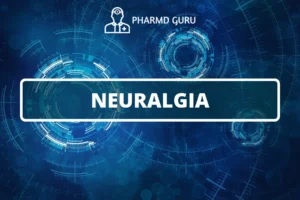Drug induced blood disorders refer to hematological abnormalities caused by the use of certain medications. These disorders can range from mild blood cell count fluctuations to more severe conditions that affect the production, function, or lifespan of blood cells. Understanding the etiopathogenesis, or the underlying mechanisms, of these drug-induced blood disorders is crucial for their diagnosis and appropriate management. In this article, we will explore the etiology of drug-induced blood disorders, the pathophysiological processes involved, and the pharmacotherapy options used in their treatment.
SCROLL DOWN TO THE BOTTOM OF THIS PAGE FOR ACTUAL NOTES.
Table of Contents
- Introduction
- Understanding Drug Induced Blood Disorders
- Etiology of Drug Induced Blood Disorders
- Pathophysiology of Drug Induced Blood Disorders
- Clinical Presentation
- Diagnostic Approaches
- Treatment Options
- Pharmacotherapy for Drug Induced Blood Disorders
- Supportive Care
- Prevention and Risk Minimization
1. Introduction
Drug-induced blood disorders are a group of hematological abnormalities that can arise as a result of medication use. These disorders can manifest as changes in blood cell counts, impaired blood cell function, or other abnormalities affecting the hematopoietic system. Understanding the underlying mechanisms and appropriate treatment options is essential for managing drug-induced blood disorders effectively.
2. Understanding Drug Induced Blood Disorders
Drug-induced blood disorders can affect different components of the blood, including red blood cells, white blood cells, and platelets. Some common drug-induced blood disorders include:
- Drug-induced anemia: Medications can cause a decrease in red blood cell count or impair their function, leading to anemia.
- Leukopenia or leukocytosis: Certain drugs can suppress or increase white blood cell counts, affecting the body’s immune response.
- Thrombocytopenia or thrombocytosis: Medications may interfere with platelet production or function, resulting in abnormal platelet counts.
3. Etiology of Drug Induced Blood Disorders
Drug-induced blood disorders can arise from various mechanisms, including:
- Bone marrow suppression: Some medications can directly suppress the bone marrow, where blood cells are produced, leading to decreased blood cell production.
- Immune-mediated reactions: Certain drugs can trigger immune responses that result in the destruction of blood cells or interference with their production.
- Drug-induced nutrient deficiencies: Some medications can deplete essential nutrients needed for proper blood cell production and function.
- Genetic predisposition: Individual genetic factors may make certain individuals more susceptible to drug-induced blood disorders.
4. Pathophysiology of Drug Induced Blood Disorders
The pathophysiology of drug-induced blood disorders involves complex interactions between the medication, the immune system, and the hematopoietic system. It can include:
- Direct toxicity: Certain drugs can directly damage blood cells or interfere with their production.
- Immune-mediated reactions: Drugs can trigger immune responses that result in the destruction of blood cells or interference with their production.
- Disruption of growth factors: Some medications may disrupt the normal activity of growth factors or cytokines involved in blood cell production.
- Drug-induced alterations in bone marrow microenvironment: Medications can affect the microenvironment of the bone marrow, leading to impaired blood cell development.
5. Clinical Presentation
The clinical presentation of drug-induced blood disorders can vary depending on the specific disorder and the affected blood cell type. Common signs and symptoms may include:
- Fatigue and weakness
- Pallor
- Easy bruising or bleeding
- Infections or recurrent infections
- Enlarged lymph nodes
- Abnormal bleeding or clotting
6. Diagnostic Approaches
Diagnosing drug-induced blood disorders requires a comprehensive evaluation, including:
- Medical history and medication review: A thorough assessment of the patient’s medical history, including current medications, can provide important clues.
- Complete blood count (CBC): Blood tests, including CBC, can reveal abnormalities in red blood cells, white blood cells, and platelets.
- Peripheral blood smear: Examination of a blood smear under a microscope can provide additional insights into the morphology and characteristics of blood cells.
- Bone marrow aspiration and biopsy: In some cases, a bone marrow examination may be necessary to determine the cause of the blood disorder.
7. Treatment Options
The management of drug-induced blood disorders involves several approaches, including:
- Discontinuation of the offending medication: The first step in treatment is identifying and discontinuing the medication responsible for the blood disorder, if possible.
- Symptomatic treatment: Addressing specific symptoms or complications associated with the blood disorder, such as blood transfusions or medication to stimulate blood cell production.
- Supportive care: Measures to support overall health, including proper nutrition, hydration, and management of comorbidities.
- Alternative medication options: In some cases, alternative medications with a lower risk of inducing blood disorders may be considered.
8. Pharmacotherapy for Drug Induced Blood Disorders
The pharmacotherapy options for drug-induced blood disorders vary depending on the specific disorder and its underlying pathophysiology. Some common pharmacological interventions include:
- Erythropoiesis-stimulating agents: Used to stimulate red blood cell production in cases of drug-induced anemia.
- Granulocyte colony-stimulating factors: Administered to increase white blood cell counts in certain drug-induced leukopenias.
- Platelet transfusions: Given to manage severe cases of drug-induced thrombocytopenia or platelet dysfunction.
It is important to note that pharmacotherapy should be tailored to the individual patient’s condition and guided by the recommendations of hematologists or specialists.
9. Supportive Care
Supportive care measures play a vital role in managing drug-induced blood disorders. These may include:
- Monitoring blood cell counts: Regular monitoring of blood cell counts helps track the progression of the disorder and adjust treatment as needed.
- Nutritional support: Ensuring an adequate intake of essential nutrients necessary for blood cell production and function.
- Infection prevention: Taking precautions to prevent infections, as individuals with drug-induced blood disorders may have an increased susceptibility to infections.
- Patient education: Providing information and guidance to patients regarding their condition, medications, and lifestyle modifications.
ACTUAL NOTES:




